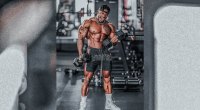The "bodybuilder look" is now identified as something very special. The physiques of boxers, wrestlers, sprinters, and all sorts of other athletes are often remarked upon as "looking like a bodybuilder." What does that mean?
Throughout history there have been tall and muscular men. We see this in statues from ancient Greece and the sculptures of Michelangelo. But since the mid-20th century, and becoming more pronounced over time, there's a certain kind of mix of muscularity, shape, symmetry, proportion, definition, and other visual qualities that modern culture has recognized as the "bodybuilder look" - what arises from a specific type of physical training and nutrition program.
Brandon Hendrickson, three-time Mr. Olympia Men's Physique Champion, knows the importance of variety to achieve the bodybuilder look. wings of strength
The method that creates this look was not invented by scientists or medical experts. It wasn't developed by exercise physiologists. It has evolved over decades through the trials and efforts of the bodybuilders themselves.
If you look at old photos from the history of bodybuilding, you can see how this evolution takes place. Barring a few legends like Steve Reeves, Bill Pearl, or Reg Park, most bodies you see pictured in a 1950's magazine just don't look like contemporary bodybuilders.
The physical culture competitions of the 1920s and 1930s, attended by athletes of all stripes, were dominated by the weightlifters, whose training produced the most dramatic changes in their physiques. These early bodybuilders found that developing a weight training program, as opposed to lifting weights, gave the body a much more aesthetic and artistic look. Instead of training the entire body in one workout several times a week, like weightlifters, these bodybuilders started split-system programs, where they only worked specific body parts in each workout.
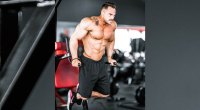 Dips are a compound movement that requires the use of multiple joints. This makes it a powerful upper body move to achieve the bodybuilder look. wings of strength
Dips are a compound movement that requires the use of multiple joints. This makes it a powerful upper body move to achieve the bodybuilder look. wings of strength
To achieve the bodybuilder look, bodybuilders did more sets and reps than normal for weightlifting and began adding additional isolation exercises to sculpt and tone individual muscles and muscle groups. Of course, they also explored diet options, and over time transitioned from red meat and whole milk to eating plans that gave them more specific control over protein, carbohydrate, and fat intake, as well as calorie restriction, cardiovascular exercise, and supplements.
Many variations on the basic bodybuilding training approach have been introduced over time. Arthur Jones, inventor of the Nautilus machine, advocated super-intensity training on machines with high resistance, low reps, few sets, and lots of techniques like negative reps and forced negatives (HIT). At the other end of the spectrum, there are advocates of high-volume training, such as B. Sets of 100 reps, as well as supersets and giant sets. Others besides Jones advocated relying primarily on machines, and we've seen many variations of exercise equipment that offered resistance to water, compressed air, and even computer-controlled friction.
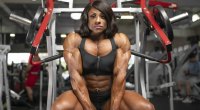 Ms. Olympia Andrea Shaw, with lots of muscle and beautiful aesthetics wings of strength
Ms. Olympia Andrea Shaw, with lots of muscle and beautiful aesthetics wings of strength
netheless, if you look at today's top bodybuilders, they're taller, harder, and more defined than at any time in history, and while their training regimens aren't identical, there is a striking resemblance. They do almost all variations of programs that seem to tap into the basic nature of the body and its muscles and get the most dramatic results. They figured out how to train if you want to look like a bodybuilder.
Almost everyone who reads bodybuilding magazines or spends time working out at a serious gym knows how a basic bodybuilding program works. But it seems relatively few understand why it works. And achieving this basic understanding is very helpful when it comes to introducing variations into your own training that keep your interest at the maximum level without reducing the effectiveness of your training.
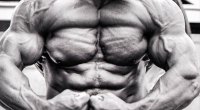 You get that kind of development by "weight training," not "weight lifting." Franco-Columbus wings of strength
You get that kind of development by "weight training," not "weight lifting." Franco-Columbus wings of strength
One of the most fundamental aspects of a training program is sets and reps. How many reps should you do from how many sets and how much weight should be involved. Again, most experienced bodybuilders know that the traditional approach that has worked for many champions is this:
- 3 to 5 sets of 4 to 5 exercises
- 8 to 12 sets for the upper body
- 12 to 16 for the lower body
- about 75% of maximum resistance for one repetition
Like everyone else, I understood early on that this was the best basic approach to training, but didn't understand the underlying principles of why it worked so well. Then I spoke to Dr. Fred Hatfield-Dr. Squat - and he introduced me to the idea of time under tension. And that made a lot clear.
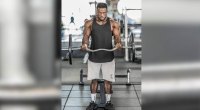 Terrence Ruffin demonstrates what exercise does by sending signals through the nervous system that inform the body that it is under physical stress and needs to respond and adapt. wings of strength
Terrence Ruffin demonstrates what exercise does by sending signals through the nervous system that inform the body that it is under physical stress and needs to respond and adapt. wings of strength
When you train a muscle, don't change it directly unless you're damaging the tissue, of course. Exercising sends signals through the nervous system that inform the body that it is under physical stress and needs to react and adapt. If you overloaded a machine, it would burn out. When you overload the body - in just the right amount - it increases its capacity.
The idea of training specificity is based on the fact that the body doesn't care what you ask it to do. It responds directly to the physical stimulus you generate. So bodybuilders over the decades have figured out what the body's underlying computer code actually is, the software that controls how it responds to physical demands.
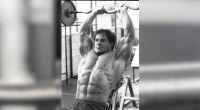 Franco Columbu went down in history as one of the greatest powerlifters and bodybuilders of all time. wings of strength
Franco Columbu went down in history as one of the greatest powerlifters and bodybuilders of all time. wings of strength
Time Under Tension is a measure of how much resistance a muscle contracts against and how long it remains exposed to that resistance. For the most part, a single standard rep of an exercise takes about 1 second. So if you do 10 reps, your muscles will be in tension for 10 seconds. While effective time under tension will vary somewhat by individual and body part, it turns out that the amount of exercise volume that best produces the bodybuilding effect comes from about 3 to 5 sets of 4 to 5 exercises. Exactly what bodybuilders themselves have figured out through decades of trial and error.
Another thing to consider is the different ways muscles can respond to different types of training. Muscle is a complex structure, and when you "build" it you can affect things like the muscle fibers themselves, mitochondrial mass, fluid content (blood and water), and glycogen storage. When weightlifters train with very heavy resistance and low reps, they end up with hard, dense, and strong muscles, but not the kind of shape and volume that bodybuilders get from their programs. Training with relatively light weight and high repetitions gives the muscles increased endurance, but not great strength or maximum shape and volume.
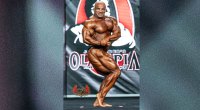 Bodybuilders like Mr. Olympia Big Ramy have gotten huge but still have the aesthetics of elite bodybuilders. wings of strength
Bodybuilders like Mr. Olympia Big Ramy have gotten huge but still have the aesthetics of elite bodybuilders. wings of strength
Bodybuilders have discovered the "sweet spot" in training, the time under tension that maximizes muscle volume and shape, definition and build by using just enough weight for just enough sets and repetitions. It turns out that most exercises for one body part have pretty similar effects on the muscle involved. Many of the variations that bodybuilders use are more beneficial because they make their workouts less boring and more interesting than because they offer some kind of unique stimulation. But that's okay, because a workout won't yield results if you don't, and the more opportunities you have to motivate yourself to workout enthusiastically, the better.
But there's another element of modern bodybuilding training that has helped create the incredible "monsters" we often see on the scene in today's competitions: recovery. When you enter a room and flick a light switch, the light comes on. need to keep turning the switch on and off. And once you've stimulated your muscles to respond and grow, there's no point in sending the same message over and over again. You just end up overtraining yourself and getting negative rather than positive results.
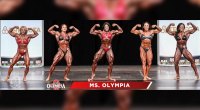 Female bodybuilders have gotten taller and more muscular but still look like women. wings of strength
Female bodybuilders have gotten taller and more muscular but still look like women. wings of strength
You can stimulate growth as many times as you want, but you don't grow when you exercise, you grow when you rest. In the past, bodybuilders often did too many sets and reps and trained far too often. Their bodies have never had enough opportunity to recover and rebuild. But the more intense your workout, the longer it will take you to fully recover. Today's bodybuilders are opting for more effective workouts, creating more intensity in the gym for shorter periods of time, and then giving their bodies more time to recover. Contemporary competitors are better than ever. Almost anyone in the top 5 in the NPC Nationals heavyweight division could easily have won the Mr. Olympia in the 1970's.
Of course, without a strict, disciplined, and effective diet, a bodybuilder will not achieve the "conditioning" -- that is, the definition, hardness, musculature, and streaks -- needed to compete at the highest level. There is no other sport that requires as much attention to nutrition, even if competitors have to "make weight" to fit into certain weight classes. There have been a number of potentially great bodybuilders with good genetics and training discipline who have failed in their careers because, for one reason or another, they just couldn't handle the demands of dieting.
SUMMARY: ACHIEVE THE BODYBUILDER LOOK
- Do 3 to 5 sets of 4 to 5 exercises
- Do split system training.
- Use about 75% of your maximum resistance for one rep.
- Combine compound (multi-joint) exercises with isolation (single-joint) exercises.
- Rely on free weights for growth and strength, machines for detail
- Maximize the nutrition in your diet and minimize calories.
- Don't exercise too often or for too long.
- Give yourself enough time between workouts to rest and recover. If you exercise too often or for too long, your body won't have the energy to grow and develop.
- Master the elements of a strict, effective definition diet.

